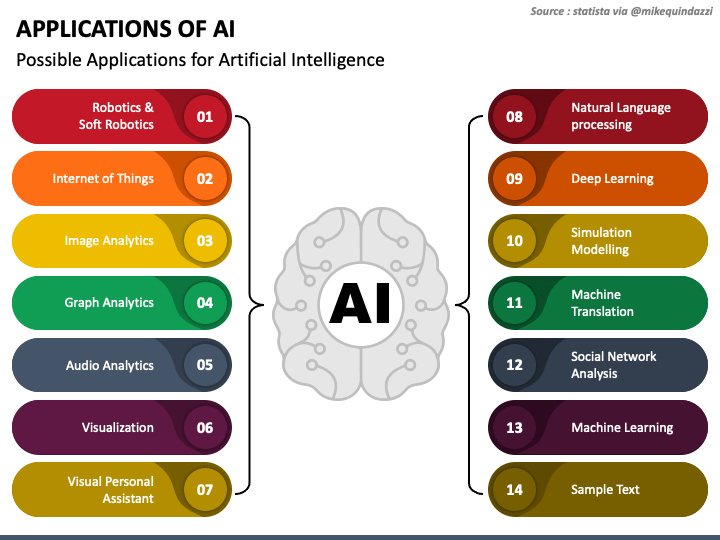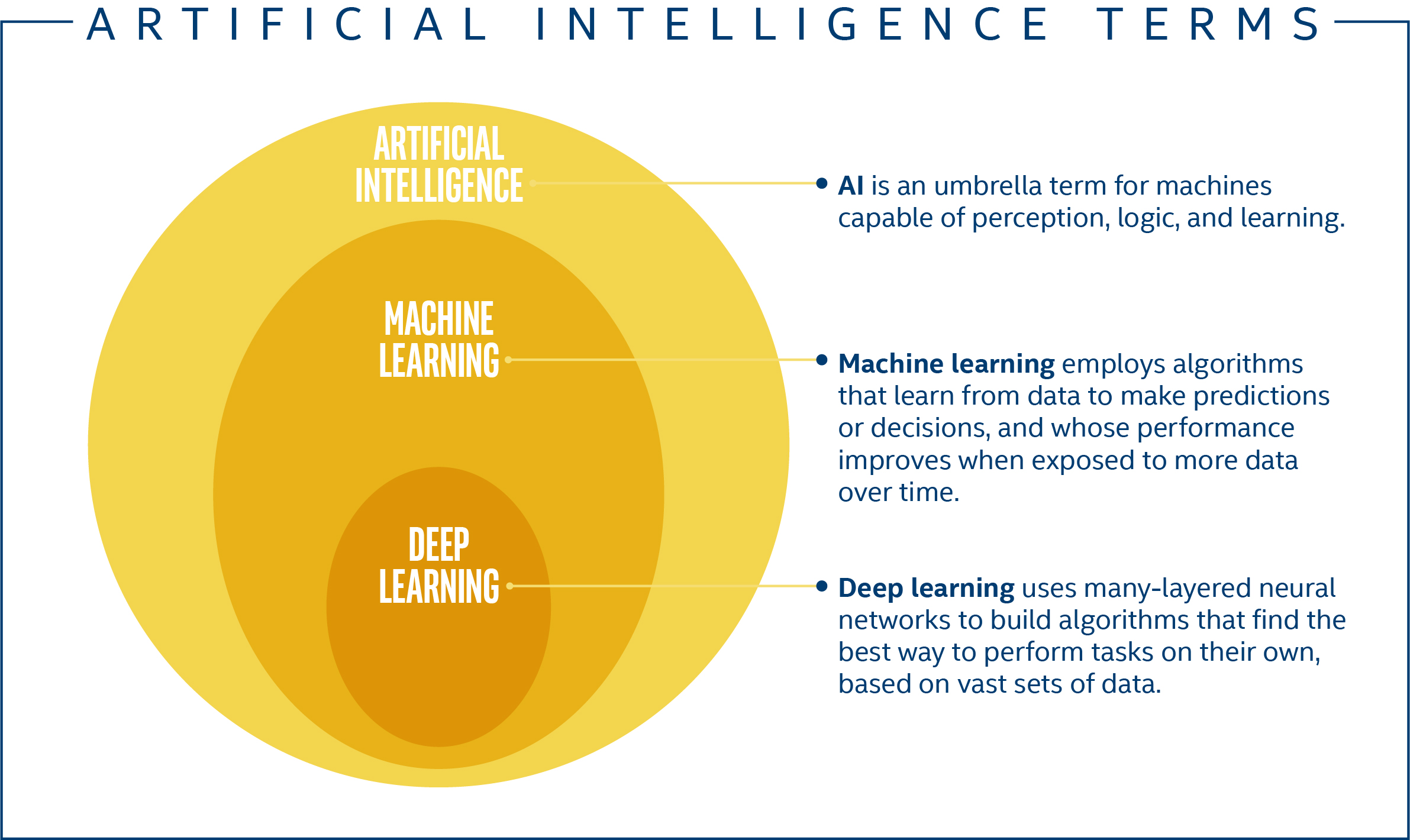
Machine learning is one subset of deep-learning. It is an artificial intelligence technique that uses large data sets. Machine learning is made possible by big data. Machine learning is inspired by the human mind and requires high-end computing machines to work well. Deep learning uses supervised learning. However, it requires high-end machine technology. Both methods can be used in the same manner.
Machine learning is a subset deep learning
Machine learning is an area within artificial intelligence that allows systems and programs to learn from past experience. The underlying algorithms, such as neural networks, use data to determine which factors are important for a particular task. This structure is similar to the human brain, so deep learning is often referred to as "deep learning."

It is inspired by the human brain
For machine learning researchers, the brain is an intriguing topic. Purdue University scientists are working to develop hardware that mimics the human brain and can be used to teach AI in continuous, over-the-year learning. This technology could allow AI to operate in isolated settings. This technology can also be embedded into hardware, allowing it to run more efficiently. The project's goal is to improve machine-learning by making it more mobile. It is an innovative way for AI to be more flexible. It could replace humans in the near future.
It is a high-end job that requires sophisticated machines
While processing power is an important factor in deep learning applications, there's more to it than that. There are also a few other key factors to take into consideration when selecting a machine. RAM is important, as it can hinder the performance of GPU code. GPUs need to run code without swapping to disk. You should ensure that your machine has sufficient RAM to be able to use GPU code. Choose a size that is compatible with the largest GPU. For example, the Titan RTX will require 24 GB of memory. It is not necessary to have more RAM. However, it can help.
It employs supervised learning
Supervised learning is the most basic type of machine learning. It involves mapping an input value and a desired output. To build a model that can assign classes to new instances, the algorithm uses examples of inputs and outputs. As the inputs and outputs are known, the algorithm can learn to classify them into different classes while minimizing its cost function. The algorithm can be used to solve a variety problems, such as credit scoring or speech recognition.

It can solve complex AI issues
Machine learning is today's engine for AI. Data security firms use machine learning to detect malware, while finance professionals want an assistant that can alert them to favorable trades. AI algorithms can learn and improve over time to simulate a virtual assistant. Deep learning algorithms, a more advanced version of machine learning, structure algorithms in layers to learn and improve. Deep learning algorithms are able to make complex decisions and complete tasks more efficiently than their simpler counterparts.
FAQ
Where did AI come?
Artificial intelligence began in 1950 when Alan Turing suggested a test for intelligent machines. He stated that a machine should be able to fool an individual into believing it is talking with another person.
The idea was later taken up by John McCarthy, who wrote an essay called "Can Machines Think?" John McCarthy, who wrote an essay called "Can Machines think?" in 1956. He described the problems facing AI researchers in this book and suggested possible solutions.
What can AI do for you?
AI has two main uses:
* Prediction - AI systems are capable of predicting future events. A self-driving vehicle can, for example, use AI to spot traffic lights and then stop at them.
* Decision making - AI systems can make decisions for us. So, for example, your phone can identify faces and suggest friends calls.
What's the future for AI?
Artificial intelligence (AI), the future of artificial Intelligence (AI), is not about building smarter machines than we are, but rather creating systems that learn from our experiences and improve over time.
So, in other words, we must build machines that learn how learn.
This would mean developing algorithms that could teach each other by example.
We should also consider the possibility of designing our own learning algorithms.
You must ensure they can adapt to any situation.
Which industries use AI most frequently?
The automotive industry was one of the first to embrace AI. BMW AG uses AI, Ford Motor Company uses AI, and General Motors employs AI to power its autonomous car fleet.
Other AI industries include banking and insurance, healthcare, retail, telecommunications and transportation, as well as utilities.
Are there any potential risks with AI?
It is. They will always be. Some experts believe that AI poses significant threats to society as a whole. Others argue that AI has many benefits and is essential to improving quality of human life.
AI's potential misuse is one of the main concerns. It could have dangerous consequences if AI becomes too powerful. This includes things like autonomous weapons and robot overlords.
AI could also replace jobs. Many people fear that robots will take over the workforce. Some people believe artificial intelligence could allow workers to be more focused on their jobs.
For example, some economists predict that automation may increase productivity while decreasing unemployment.
What are the benefits of AI?
Artificial Intelligence is a revolutionary technology that could forever change the way we live. It has already revolutionized industries such as finance and healthcare. And it's predicted to have profound effects on everything from education to government services by 2025.
AI is already being used for solving problems in healthcare, transport, energy and security. The possibilities are endless as more applications are developed.
It is what makes it special. First, it learns. Computers learn independently of humans. Instead of being taught, they just observe patterns in the world then apply them when required.
This ability to learn quickly is what sets AI apart from other software. Computers can process millions of pages of text per second. They can recognize faces and translate languages quickly.
It doesn't even require humans to complete tasks, which makes AI much more efficient than humans. It can even outperform humans in certain situations.
A chatbot named Eugene Goostman was created by researchers in 2017. The bot fooled many people into believing that it was Vladimir Putin.
This shows that AI can be extremely convincing. Another benefit of AI is its ability to adapt. It can be taught to perform new tasks quickly and efficiently.
This means businesses don't need large investments in expensive IT infrastructures or to hire large numbers.
Statistics
- A 2021 Pew Research survey revealed that 37 percent of respondents who are more concerned than excited about AI had concerns including job loss, privacy, and AI's potential to “surpass human skills.” (builtin.com)
- According to the company's website, more than 800 financial firms use AlphaSense, including some Fortune 500 corporations. (builtin.com)
- In the first half of 2017, the company discovered and banned 300,000 terrorist-linked accounts, 95 percent of which were found by non-human, artificially intelligent machines. (builtin.com)
- The company's AI team trained an image recognition model to 85 percent accuracy using billions of public Instagram photos tagged with hashtags. (builtin.com)
- More than 70 percent of users claim they book trips on their phones, review travel tips, and research local landmarks and restaurants. (builtin.com)
External Links
How To
How to set up Cortana daily briefing
Cortana, a digital assistant for Windows 10, is available. It is designed to help users find answers quickly, keep them informed, and get things done across their devices.
Your daily briefing should be able to simplify your life by providing useful information at any hour. The information should include news, weather forecasts, sports scores, stock prices, traffic reports, reminders, etc. You can choose the information you wish and how often.
To access Cortana, press Win + I and select "Cortana." Select "Daily briefings" under "Settings," then scroll down until you see the option to enable or disable the daily briefing feature.
If you've already enabled daily briefing, here are some ways to modify it.
1. Start the Cortana App.
2. Scroll down until you reach the "My Day” section.
3. Click the arrow to the right of "Customize My Day".
4. Choose which type you would prefer to receive each and every day.
5. You can change the frequency of updates.
6. Add or remove items from the list.
7. Keep the changes.
8. Close the app.